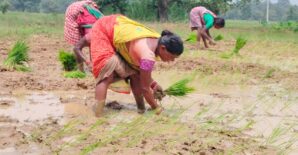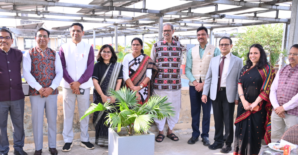
Source: Rasmi Avula/IFPRI
Cross-posted from India Food Security Portal
While India has made significant progress in nutrition incomes for women and children over the past ten years, this progress has not been uniform across states, and several regions still lag behind national nutrition and health trends and program implementation.
This is according to the latest research from POSHAN, published in a recent paper covering nutrition trends and determinants in the country from 2006-2016. The report utilizes data from India’s National Family Health Surveys for 2005-2006 and 2015-2016 and the2013-2015 Rapid Survey on Children, as well as a comprehensive review of India’s policies and programs aimed at improving women’s and children’s nutrition outcomes. The paper also examined levels and changes in immediate, underlying, and basic determinants of nutrition and health, based on indicators and formulas taken from UNICEF.
According to the report’s findings, India as a whole has seen substantial progress on a number of nutrition and health incomes over the past decade. Child stunting fell from 48 percent to 38.4 percent, and child underweight rates also declined from 42.5 percent to 37.5 percent. The use of exclusive breastfeeding increased by almost 9 percentage points, and low birthweights in children fell from 21.5 percent to 18.6 percent.
However, national levels of wasting in children increased during the study period, from 19.8 percent to 21 percent. The rates of anemia in women, a major health challenge in India, remained fairly stagnant during the study period; anemia continues to impact almost half of Indian women of reproductive age.
Nationally, the underlying determinants of nutrition improved during the study period. The report finds improvements in women’s education levels and marriage age, both of which impact women’s overall well-being. The number of women with 10 or more years of education grew by 10 –percentage points, while the number of girls getting married before the age of 18 fell by 20 percentage points. The study also reports an increase in access to electricity, safe drinking water, and improved sanitation facilities. However, the authors also emphasize that further efforts and investments are needed in these areas, particularly education and sanitation, in order to ensure continued inclusive improvements in health and nutrition outcomes.
The immediate determinants of nutrition – such as early use of breastfeeding, timely introduction of complementary foods for children, and children’s disease burden – saw mixed results during the study period. Women with low BMI declined from 35.5 percent to 22.9 percent, nationally. The number of women breastfeeding their infants doubled from 23.4 percent to 41.6 percent, but the introduction of appropriate complementary foods for older children declined from 52.6 percent to 42.7 percent. The disease burden for children (including diarrhea and acute respiratory infections) remains low, but did not change much over the study period; thus, further efforts to prevent childhood illnesses are needed to “move the dial” on that indicator.
National coverage of nutrition-specific interventions, such as programs to provide iron-folic acid supplements to pregnant women and immunizations and vitamin A supplements to infants and children, improved throughout the period. However, overall coverage of food supplementation programs (during pregnancy, lactation, and early childhood) remains at only 40-50 percent. In fact, of the 12 nutrition-specific interventions reviewed by the report, only three (institutional delivery, skilled birth attendance, and birth registration) reached 75 percent. Thus, while India’s two national women and child health programs - the National Health Mission (NHM) and the Integrated Child Development Services (ICDS) – attempted to expand coverage from 2006-2016, challenges clearly remain. The authors identify these challenges as poor policy guidance, lack of financing, poor state-level implementation, and lack of education or positive perceptions that may impact people’s choices to participate in these interventions.



